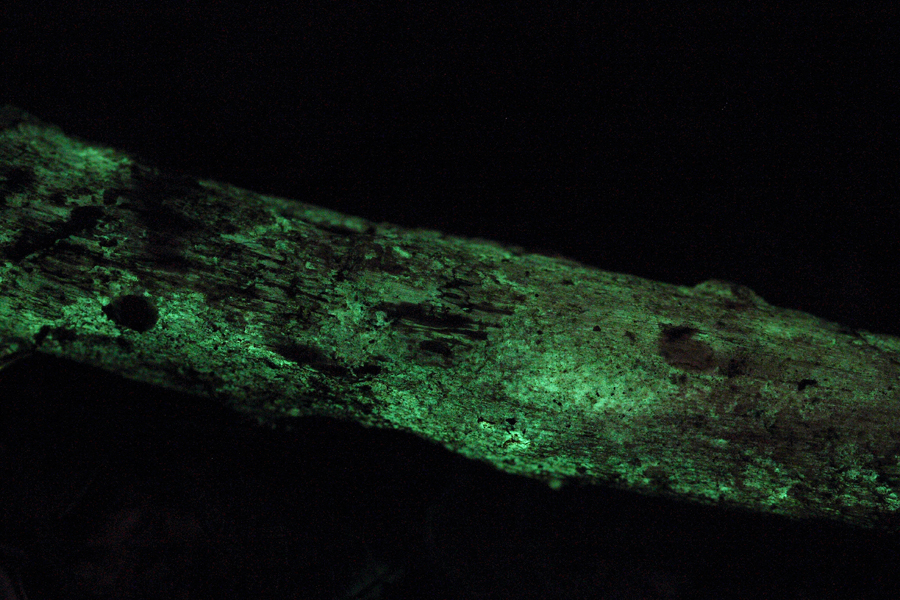
Night brings with it a sense of enigma. Darkness, and everything associated, is one such thing. This is more pronounced because of the fear instilled in us during our formative years. The familiar path that we tread with ease during daytime, under the cover of darkness, is full of ‘hurdles’ that often don’t physically exist. This primarily is due to our dependence on our vision. It also prevents us from exploring our environment under the night sky. For most urbanites who are used bright light even after sunset, it is a world that does not exist.
Imagine yourself in the midst of a dense forest with no torch to guide you along the path. The only available light is the faint glow of the night sky to vaguely light your path. Close your eyes for a long second. And, when you open your eyes, you see streaks of faint green glow on the forest floor. Look hard and you will see that some tree limbs around you have the same eerie glow. So much so that it sends a shiver down your spine.
For those who are not aware of the presence of bioluminescent fungi, it can be spooky. But for the informed, who has been aching to see this phenomenon -– it is a treat. You shine the torch and you see a normal dry twig. Switch it off and get used to the darkness — you see the twig glow again!
I have in the past written about glow worms where I have discussed some aspects of bioluminescence and also mentioned that the light produced by these creatures does not produce heat.
The bioluminescent fungus too produces the faint glow in a process which is akin to that used by the glow worm. The growing part of the body of the fungi (hyphae) which is present in decaying plant matter is responsible for the glow.
Only about 70 species of fungi are known to be bioluminescent. This is a very small number if you considered the diversity of fungi in the world – over 70,000 known species! Why they glow, what benefit they derive is not very clear. However, some preliminary observations suggest that the bioluminescence could attract insects which help in dispersing spores!
Like the bioluminescent fungi, there are a lot of organisms that are best seen and appreciated under the cover of darkness. Resist the urge to switch on that torch. Step outside your comfort zone – at least once in a while. And enjoy what Nature has to offer.

 CI is a non-profit, non-commercial portal that aims to facilitate wildlife and nature conservation by providing reliable information and the tools needed to campaign effectively.
CI is a non-profit, non-commercial portal that aims to facilitate wildlife and nature conservation by providing reliable information and the tools needed to campaign effectively.
Chosen as 'Picture of the Week'
Like the bioluminescent fungi, there are a lot of organisms that are best seen and appreciated under the cover of darkness. Resist the urge to switch on that torch. And enjoy what Nature has to offer.